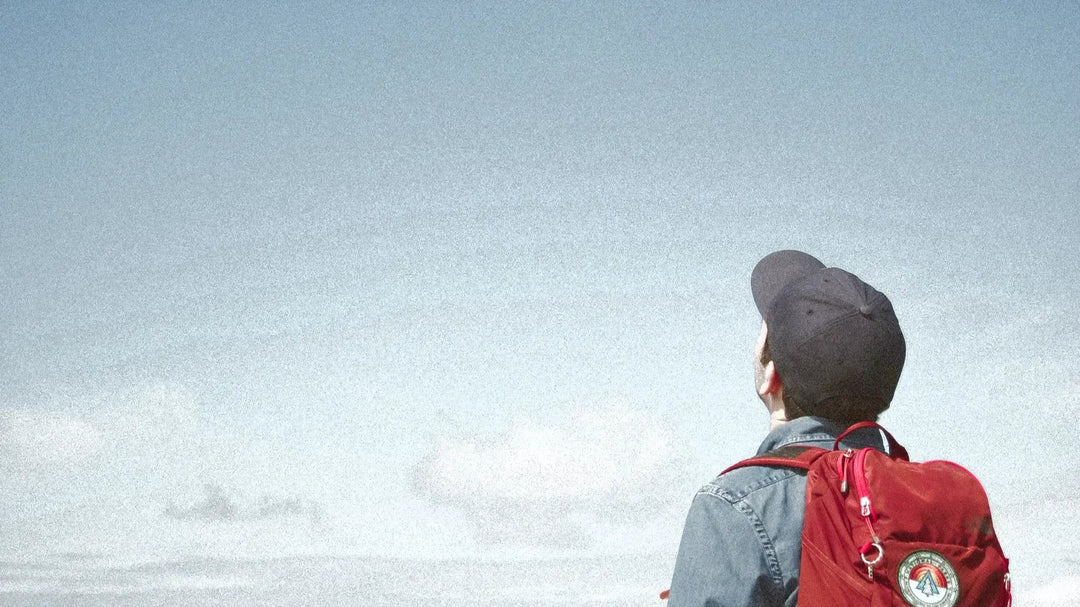LWL | Sports and Scoliosis: Is scoliosis affected negatively or positively by certain physical activities?
Sports and Scoliosis: Is scoliosis affected negatively or positively by certain physical activities
By Shreya Singh
Abstract:
Adolescent scoliosis is one of the most common forms of structural spinal deformities and usually develops during 11 to 18 years of age.[1,2] It is diagnosed if the Cobb angle or curvature of the spine is greater than or equal to 10°. [3] The main question we aim to solve in this paper is to what extent various sports affect scoliosis in the early teenage years. In this paper, we take two popular sports: swimming and ballet, and compare and analyse their effects on scoliosis. In this paper, we conclude that swimming, a relaxing and strengthening sport, helps prevent scoliosis severity, while ballet, a rigorous, spine-pressured sport, can increase its severity in the early teenage years.
Introduction
Adolescent scoliosis is one of the most common forms of structural spinal deformities and usually develops during 11 to 18 years of age.[1,2] It is diagnosed if the Cobb angle or curvature of the spine is greater than or equal to 10°. [3] A recent study has shown that it is present in two to four percent of children between the ages of 10 and 16.[4] It is more common in women than in men with a female-to-male ratio of 1.5:1 to 3:1 and this increases with age.[5] Physical activity plays a significant role in scoliosis. The main question we aim to solve in this paper is to what extent various sports affect scoliosis in the early teenage years. In this paper, we take two popular sports: swimming and ballet, and compare and analyse their effects on scoliosis. There are other factors such as genes and gender that affect scoliosis. This paper recognizes this and also recognizes that there are various other physical activities but ballet and swimming were the optimal choices.
Sports
Swimming is scientifically defined as the propulsion of the body through water by combined leg and arm movements and the ability of the individual to float on top of water.[6]It is a recommended activity for aiding patients diagnosed with scoliosis. Various studies have been conducted on the relationship between and scoliosis such as: The significance of swimming and corrective exercises in water in the treatment of postural deficits and scoliosis.[7] This article highlights how swimming aids in the harmonious and holistic development of the body with minimum chances of injury. In this paper, the research suggests that swimming training in the early years of education,
between 8 to 12 years of age, does not negatively affect the development of physiological spinal curvature. It also states that competitive swimming and swim classes have been found to have a positive impact on strength, endurance, and muscle movement arm in children with scoliosis.[7] Another paper is from the Turkish Journal of Sports Medicine titled The Prevalence of Scoliosis in Adolescent Swimmers and the Effect of Swimming on Adolescent Idiopathic Scoliosis[8]. This paper outlines the experiment conducted which had swimmers with scoliosis who were tested for the degree of their spinal curvature and were told to continue swimming and report back in 1 year. After a year the participants showed no signs of change in the degree of the curvature. A similar study was conducted by the Sports Medicine Division, Tepecik Education and Research Hospital, University of Health Sciences, İzmir, Turkey, and the Department of Public Health, Yıldırım Beyazıt University, Ankara, Turkey.[9] In this study, we are provided with an X-ray of an adolescent swimmer with scoliosis (Fig.1) and a table displaying the change in the degree of curvature after one year (Fid.2)
Figure 1. Cobb angle was used to evaluate the magnitude of the scoliotic curve. First, the end vertebrae which were the most tilted vertebrae in the spine were defined. Then, a line was drawn through the proximal endplate of the upper-end vertebra (Line 1) and another line was drawn through the distal endplate of the lower-end vertebra (Line 2). The angle between these 2 lines was defined as the Cobb angle.
Figure 2. Radiological evaluations of swimmers with follow-up.
Ballet is a formal academic dance technique[10]. Ballet dancers are prone to injury since they undergo rigorous training from an early age, in girls, typically before adolescence [11]. A study on the relationship between ballet and scoliosis by Michelle P. Warren, M.D., J. Brooks Gunn, Ph.D., Linda H. Hamilton, L. Fiske Warren, M.D., and William G. Hamilton, M.D. conducted an experiment with 75 dancers from four different professional ballet companies.[12] This study found that 15 out of 18 dancers, 83 percent, had scoliosis. Another paper written by Abdussalam Ayad from the Lviv State University of Physical Culture states that starting ballet at a younger age, increased frequency of ballet training, and increased duration of ballet are associated with an increased risk for developing the abnormal curvature seen in scoliosis.[10] Another study by Brooke Longworth BSc, Robyn Fary PhD, and Diana Hopper PhD from the School of Physiotherapy and Exercise Science, Curtin University, Perth, WA, Australia shows that 30 percent of dancers tested positive for scoliosis compared with 3 percent of nondancers. Odds ratio calculations suggest that dancers were 12.4 times more likely to have scoliosis than nondancers of the same age[13].
Discussion
The article, The Significance of Swimming and Corrective Exercises in Water in the Treatment of Postural Deficits and Scoliosis [7] states that swimming by counterbalancing gravity and supporting the body weight, the aquatic environment causes muscles to relax, which makes it easier to assume the correct posture[7]. It also states that swimming simultaneously activates the greatest number of muscles, in
particular spinal and abdominal muscles, which results in the reinforcement of the entire muscular corset. The aquatic environment is one of the few places in which a patient who suffered an injury of the spinal cord may move without the aid of any orthopedic equipment[7]. The two other studies mentioned above are similar [8,9] taking the initial degree of curvature and then the degree of curvature after a year. In the study from the Turkish Journal of Sports Medicine titled The Prevalence of Scoliosis in Adolescent Swimmers and the Effect of Swimming on Adolescent Idiopathic Scoliosis[8], the results show that there was little to no change in the degree of curvature. In Figure 1 above we can see an x-ray of an adolescent swimmer with scoliosis and the angle between the line 1 and 2 drawn is known as the Cobb angle[9]. In Figure 2 the first column is the first value of the degree of curvature taken and the second column is the degree of curvature after 1 year. Here we can see there is a very slight difference between the 1st and 2nd follow-up and the p-value is very small, ranging from 5.87 percent to 7.09 percent of change.[9] From these studies, we can conclude that swimming is advantageous for the prevention of excess increase in the degree of curvature of a scoliosis patient.
The article, A Study on the Relationship Between Ballet and Scoliosis[12] shows that dancers are more prone to scoliosis compared to non-dancers [13]. Also, Another study since ballerinas start arduous training from a young age, usually before puberty, which results in an abnormal development of the spine forming a spinal curvature[10]. Ballet stretches the body and puts pressure on the spine since the dancers are dancing on their toes for long periods of time from which we can conclude that ballet has a negative effect on scoliosis.
Conclusion
From the above information, we can conclude that sports that relax and strengthen your muscles such as swimming aid in the prevention of an increase in the severity of scoliosis. Sports that put pressure on the spine and require a lot of stretching and rigorous training from a young age such as ballet have a negative impact on scoliosis and increase the severity of scoliosis in the early teenage years.
Bibliography:
- Cheng, J. C., Castelein, R. M., Chu, W. C., Danielsson, A. J., Dobbs, M. B., Grivas, T. B., Gurnett, C. A., Luk, K. D., Moreau, A., Newton, P. O., Stokes, I. A., Weinstein, S. L., & Burwell, R. G. (2015). Adolescent idiopathic scoliosis. Nature Reviews Disease Primers, 1(1), 1-21.
https://doi.org/10.1038/nrdp.2015.30 (Accessed: 10 October 2023). 2. Konieczny, M. R., Senyurt, H., & Krauspe, R. (2013). Epidemiology of adolescent idiopathic scoliosis. Journal of Children's Orthopaedics. https://doi.org/10.1007/s11832-012-0457-4
- Cheng, J. C., Castelein, R. M., Chu, W. C., Danielsson, A. J., Dobbs, M. B., Grivas, T. B., Gurnett, C. A., Luk, K. D., Moreau, A., Newton, P. O., Stokes, I. A., Weinstein, S. L., & Burwell, R. G. (2015). Adolescent idiopathic scoliosis. Nature Reviews Disease Primers, 1(1), 1-21.
https://doi.org/10.1038/nrdp.2015.30
- Reamy, B.V. and Slakey, J.B. (2001) Adolescent idiopathic scoliosis: Review and current concepts, American Family Physician. Available at: https://www.aafp.org/pubs/afp/issues/2001/0701/p111.html (Accessed: 10 October 2023).
- Konieczny, M. R., Senyurt, H., & Krauspe, R. (2013). Epidemiology of adolescent idiopathic scoliosis. Journal of Children's Orthopaedics. https://doi.org/10.1007/s11832-012-0457-4
- Swimming (2023) Encyclopædia Britannica. Available at:
https://www.britannica.com/sports/swimming-sport (Accessed: 10 October 2023).
- The significance of swimming and corrective exercises in water in ... (no date) Google Scholar. Available at:
https://wnus.usz.edu.pl/cejssm/file/article/view/148.pdf (Accessed: 10 October 2023).
- Aydın, C.G. et al. (1970) The prevalence of scoliosis in adolescent swimmers and the effect of swimming on adolescent idiopathic scoliosis, Spor Hekimliği Dergisi. Available at:
https://www.journalofsportsmedicine.org/full-text/520/eng (Accessed: 10 October 2023).
- [PDF] The prevalence of scoliosis in adolescent swimmers and the effect ... Available at:
https://www.semanticscholar.org/paper/The-Prevalence-of-Scoliosis-in-Ad
olescent-Swimmers-Ayd%C4%B1n-%C3%96ner/0ed9c0b0217cbd576956 2609c240f936d6a8baeb (Accessed: 10 October 2023).
10.Ballet (2023) Encyclopædia Britannica. Available at:
https://www.britannica.com/art/ballet (Accessed: 10 October 2023). 11. BALLET DANCE AND SCOLIOSIS: HOW THEY ARE RELATED? Abdussalam AYAD Lviv State University of Physical Culture, Lviv, Ukraine, e-mail: absy.ayad1987@gmail.com. Available at:
https://sportscience.ldufk.edu.ua/index.php/msnu/article/viewFile/719/694 (Accessed: 11 October 2023)
12.Warren MP; Brooks-Gunn J; Hamilton LH; Warren LF; Hamilton WG; (no date) Scoliosis and fractures in young ballet dancers. relation to delayed menarche and secondary amenorrhea, The New England Journal of Medicine. Available at: https://pubmed.ncbi.nlm.nih.gov/3451741/ (Accessed: 10 October 2023).
- Author links open overlay panelBrooke Longworth BSc et al. (2014) Prevalence and predictors of adolescent idiopathic scoliosis in adolescent ballet dancers, Archives of Physical Medicine and Rehabilitation. Available at:
https://www.sciencedirect.com/science/article/abs/pii/S000399931400209 3 (Accessed: 10 October 2023).




